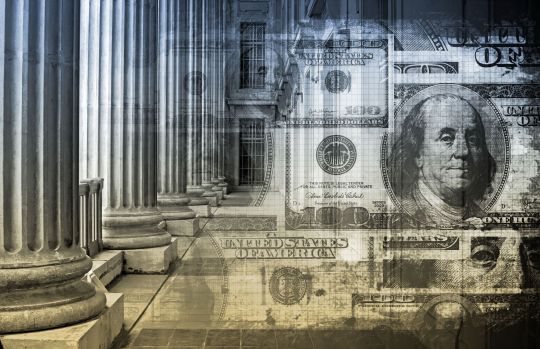Recommendations for Improving America’s Tax Environment (Full Version)

Competition in the global marketplace has never been more fierce. As our global trading partners continue to increase productivity and improve international trade policies, the cost of doing business in the U.S. continues to place a burden on American manufacturers, due in part to our country’s stringent tax environment.
According to the National Association of Manufacturers (NAM), the U.S. has the highest corporate tax rate among the major industrial nations. What’s more, 70 percent of manufacturers pay income taxes at individual rates, so as taxes on individuals increase, so too do taxes on manufacturers. To further complicate matters, manufacturers must continually keep up with ever-changing and unpredictable tax codes. Carolyn Lee, senior director of tax policy for NAM, says this leads to a large amount of uncertainty for manufacturers, and it’s up to the U.S. government to help alleviate this burden.
“Providing certainty on the tax side can mean real jobs in the future,” explained Lee. “Take, for example, a business that is looking to plan for the future. If they know the impact taxes will have on their budgets, they can plan for expansions and retention of existing jobs.”
Earlier this year, NAM developed four goals for economic growth as a blueprint for government to ensure the U.S. provides the best possible business climate for manufacturers. Included in this blueprint are recommendations for improving the tax environment. Lee says one of NAM’s biggest priorities in this regard is lowering the corporate tax rate.
“The corporate tax rate matters when companies are looking to make an investment,” Lee began. “While there are a lot of incentives and a lot of things to reduce your taxes, when you just look at the basics and compare our corporate tax rate to that of other countries, we don’t score well.” Lee says NAM’s specific recommendation is to reduce the corporate tax rate to 25 percent or lower, while ensuring manufacturers don’t experience a substantial increase in their taxes because of base broadening, or ending some of the deductions and credits in the tax code in order to create a lower rate.

Other tax reforms recommended by NAM include:
• Reducing taxation on foreign income of U.S.-based businesses by moving from a worldwide tax system to a territorial system that is structured to enhance competitiveness, not raise additional revenue.
• Instituting permanent lower income tax rates for individuals and small businesses to increase resources with which they make capital investments in order for them to expand their businesses and create jobs.
• Instituting permanent lower tax rates on investment income to encourage savings.
• Instituting permanent lower tax rates on estates to protect family-owned manufacturing businesses and prevent double taxation.
Tax reform remains a widely discussed issue across the nation, especially in a presidential election year. A recent Associated Press article featured in The Washington Post (5/24/12) reviewed the positions of Obama and newly elected Republican presidential nominee Mitt Romney on how they might help U.S. manufacturers to become more competitive.
According to the article, Romney would lower the corporate tax rate across the board from 35 percent to 25 percent, and says doing so will enable manufacturers to reinvest profits and increase wages for skilled workers. Obama would lower the overall corporate rate to 28 percent, but offer a domestic product deduction to manufacturers that would result in a 25 percent corporate tax rate for these types of businesses as well.
Both candidates say they would make permanent the research and development tax credit, a credit that has been temporarily expanded 14 times since its inception in the mid-‘90s. Beyond this, the president proposes extending a tax credit for advanced energy manufacturing and would double the credit for advanced manufacturing technologies from 9 to 18 percent.
For more information on NAM’s goals for economic growth, visit www.nam.org and click on Manufacturing Renaissance under the Issues tab.
To read the entire AP article featured in The Washington Post, click here. (insert link to https://www.washingtonpost.com/national/where-the-presidential-candidates-stand-on-how-to-help-us-manufacturers-be-more-competitive/2012/05/24/gJQA4OC4nU_story.html)
- Category:
- GrayWay
Some opinions expressed in this article may be those of a contributing author and not necessarily Gray.